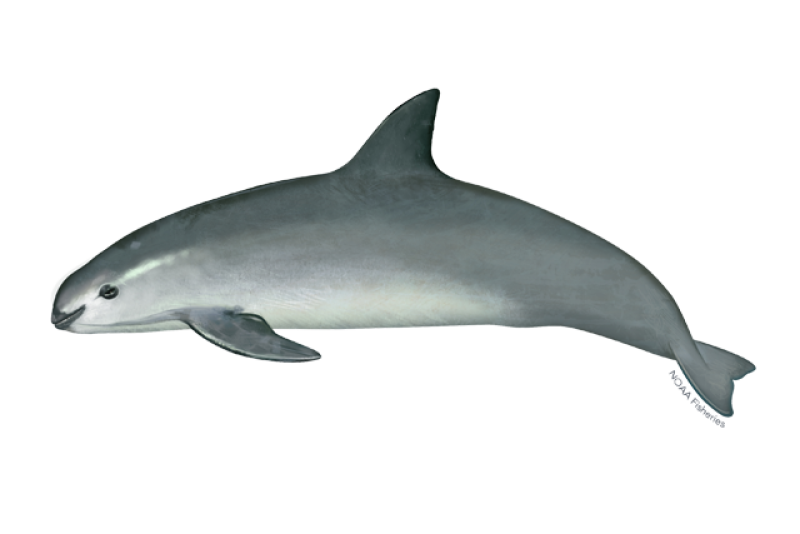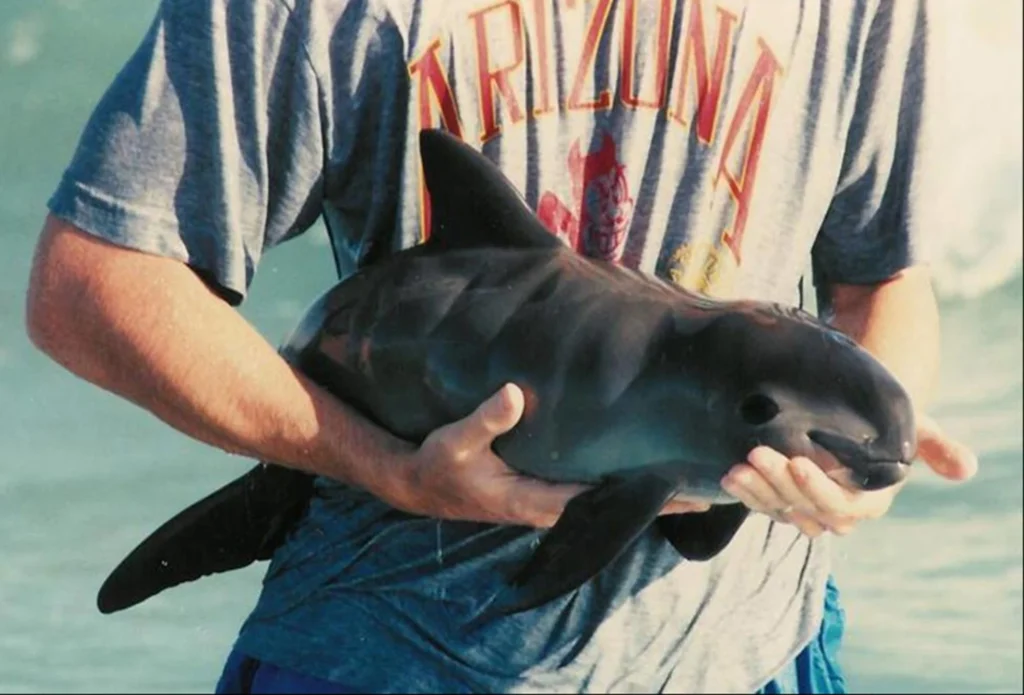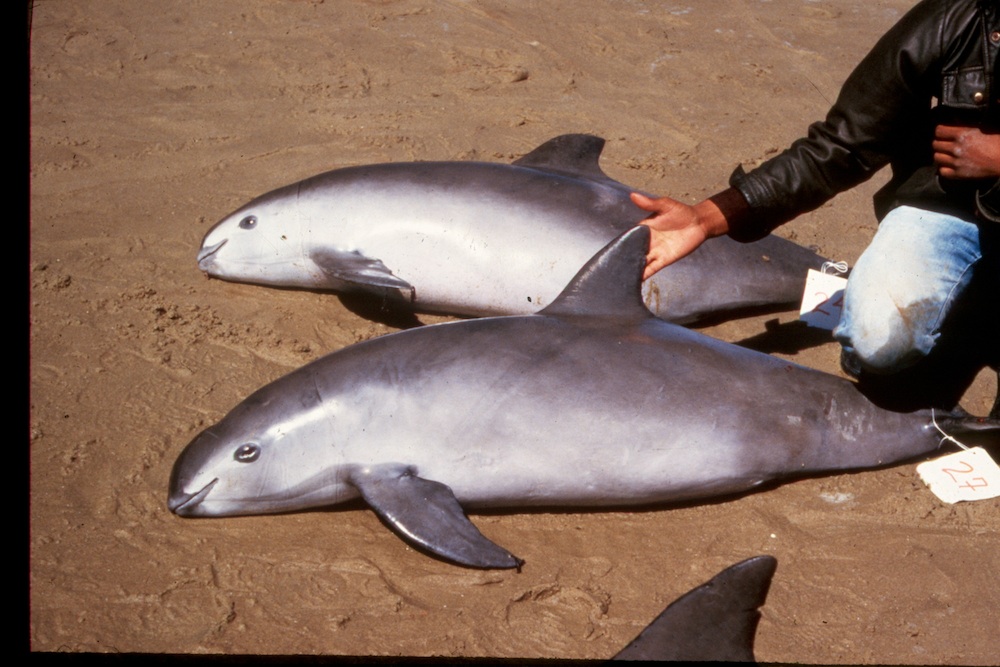Vaquita
Introduction:
The term “vaquita” is derived from the Spanish word for “little cow,” reflecting the small size and perhaps the somewhat cow-like appearance of these porpoises. The vaquita’s scientific name is Phocoena sinus, where “Phocoena” is the genus name for porpoises, and “sinus” refers to the Gulf of California, its primary habitat.
The vaquita is native to the northern part of the Gulf of California, also known as the Sea of Cortez, and it is found exclusively in this region. The Gulf of California is a biologically rich and diverse marine environment located between the Baja California Peninsula and mainland Mexico.
The vaquita (Phocoena sinus) is a small species of porpoise that is native to the northern part of the Gulf of California. It is recognized as the smallest and most endangered cetacean species in the world. The vaquita is distinguishable by its small size, with adult females typically reaching lengths of about 1.2 to 1.5 meters (3.9 to 4.9 feet) and males being slightly smaller.

Taxonomic classifications:
- Kingdom: Animalia
- Phylum: Chordata
- Class: Mammalia
- Order: Cetacea (which includes whales, dolphins, and porpoises)
- Suborder: Odontoceti (toothed whales)
- Family: Phocoenidae (porpoises)
- Genus: Phocoena
- Species: Phocoena sinus
Habitat:
Vaquitas are found exclusively in the northern part of the Gulf of California, also known as the Sea of Cortez. This area is characterized by shallow, murky waters with complex tidal and current patterns.
Lifespan:
The lifespan of a vaquita (Phocoena sinus) in the wild is not precisely known, but it is estimated to be around 20 years.
Population:
The vaquita population has experienced a drastic decline over the past few decades. In the 1990s, it was estimated that there were around 600 individuals. However, due to factors such as illegal fishing practices, particularly the use of gillnets to catch another endangered species, the totoaba fish, the vaquita population has plummeted. By 2018, it was estimated that only around 10 individuals remained. Given the continued rate of bycatch and low reproductive output from a small population, it is estimated that there are fewer than 10 vaquitas alive as of February 2022. In 2023, it is still estimated that there are as few as 10 in the wild.

Mating behavior:
Vaquitas, like other cetaceans, exhibit a mating behavior known as promiscuity. In promiscuous mating systems, individuals do not form long-term pair bonds, and both males and females may have multiple mating partners.

Gestation period:
The gestation period for vaquitas (Phocoena sinus) is estimated to be around 10 to 11 months. This is the duration of pregnancy for female vaquitas, during which time they carry and nourish their developing offspring in the womb before giving birth.

Conservation status:
It is considered the most endangered marine mammal in the world. The vaquita has been listed as critically endangered by the IUCN Red List of Threatened Species since 1996. The vaquita is at risk of extinction due to its small population size.

Threats:
The primary threat to the vaquita is bycatch in illegal gillnet fisheries targeting the totoaba fish. The totoaba’s swim bladder is highly valued in traditional Chinese medicine, leading to a lucrative black market. Vaquitas often become entangled in these nets and drown. Other threats include habitat degradation, pollution, and climate change.


Conservation Efforts:
Conservationists and governmental organizations have been working tirelessly to save the vaquita. Efforts include establishing a Vaquita Refuge, implementing gillnet bans, and employing acoustic monitoring to detect and deter illegal fishing activities. There have also been initiatives to encourage sustainable fishing practices in the region.
International Collaboration:
Given the international nature of the illegal trade in totoaba swim bladders, there have been collaborative efforts involving Mexico, the United States, and China to address the issue. This includes increased enforcement, public awareness campaigns, and diplomatic efforts.
Challenges:
Despite conservation efforts, the vaquita faces significant challenges, including the difficulty of patrolling and enforcing regulations in the vast and remote Gulf of California. The high economic value of totoaba swim bladders on the black market creates a strong incentive for illegal fishing.
Future Outlook:
The vaquita remains critically endangered, and its future is uncertain. Continued efforts to combat illegal fishing, enforce regulations, and promote sustainable practices are crucial for the survival of this species.